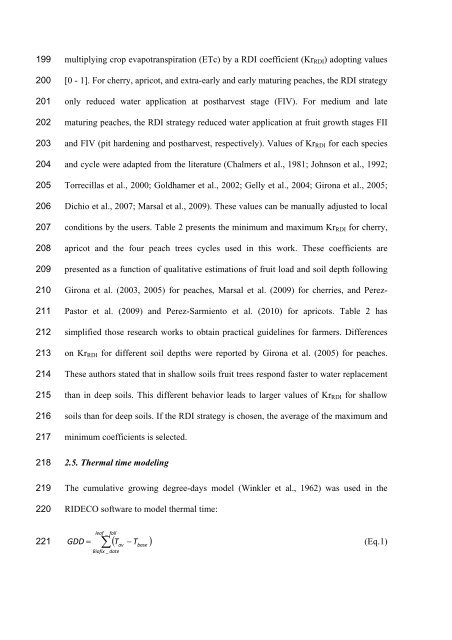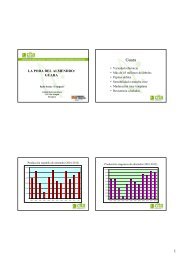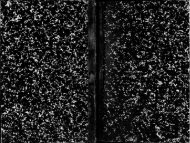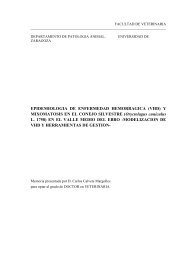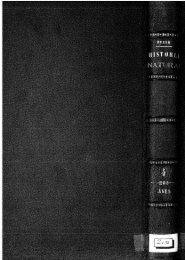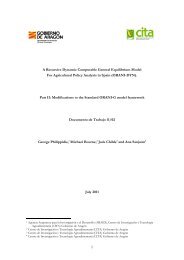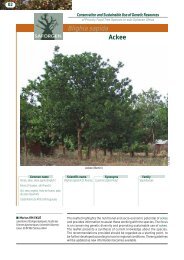SOFTWARE FOR ON-FARM IRRIGATION SCHEDULING ... - citaREA
SOFTWARE FOR ON-FARM IRRIGATION SCHEDULING ... - citaREA
SOFTWARE FOR ON-FARM IRRIGATION SCHEDULING ... - citaREA
Create successful ePaper yourself
Turn your PDF publications into a flip-book with our unique Google optimized e-Paper software.
199<br />
200<br />
201<br />
202<br />
203<br />
204<br />
205<br />
206<br />
207<br />
208<br />
209<br />
210<br />
211<br />
212<br />
213<br />
214<br />
215<br />
216<br />
217<br />
218<br />
219<br />
220<br />
221<br />
multiplying crop evapotranspiration (ETc) by a RDI coefficient (KrRDI) adopting values<br />
[0 - 1]. For cherry, apricot, and extra-early and early maturing peaches, the RDI strategy<br />
only reduced water application at postharvest stage (FIV). For medium and late<br />
maturing peaches, the RDI strategy reduced water application at fruit growth stages FII<br />
and FIV (pit hardening and postharvest, respectively). Values of KrRDI for each species<br />
and cycle were adapted from the literature (Chalmers et al., 1981; Johnson et al., 1992;<br />
Torrecillas et al., 2000; Goldhamer et al., 2002; Gelly et al., 2004; Girona et al., 2005;<br />
Dichio et al., 2007; Marsal et al., 2009). These values can be manually adjusted to local<br />
conditions by the users. Table 2 presents the minimum and maximum KrRDI for cherry,<br />
apricot and the four peach trees cycles used in this work. These coefficients are<br />
presented as a function of qualitative estimations of fruit load and soil depth following<br />
Girona et al. (2003, 2005) for peaches, Marsal et al. (2009) for cherries, and Perez-<br />
Pastor et al. (2009) and Perez-Sarmiento et al. (2010) for apricots. Table 2 has<br />
simplified those research works to obtain practical guidelines for farmers. Differences<br />
on KrRDI for different soil depths were reported by Girona et al. (2005) for peaches.<br />
These authors stated that in shallow soils fruit trees respond faster to water replacement<br />
than in deep soils. This different behavior leads to larger values of KrRDI for shallow<br />
soils than for deep soils. If the RDI strategy is chosen, the average of the maximum and<br />
minimum coefficients is selected.<br />
2.5. Thermal time modeling<br />
The cumulative growing degree-days model (Winkler et al., 1962) was used in the<br />
RIDECO software to model thermal time:<br />
leaf _ fall<br />
GDD Tav Tbase<br />
<br />
(Eq.1)<br />
Biofix _date


